At CarnivoreWeb.com, we independently review products and outfitters. However, we may earn a commission when you purchase products through links on our site. Read our affiliate policy. Read about how we test products.
Big fields filled with big dreams. And lots of big deer.
It was December something, 2012, the Friday before opening morning of Iowa’s second shotgun season, and my Chevy was rolling south along that stretch of Interstate 35 between Mason City and Des Moines, where the only thing to look at is the reflection in the rearview mirror. There’s nothing, especially in December after the crops are out — if you’ve driven that stretch, you know that “nothing” is an understatement.
But it’s a good stretch of road to do some thinkin’, and I specifically remember thinking that there didn’t seem to be a whitetail within a thousand miles of that place. But three hours later, on the opposite border of the state, I found myself circling the town square of a stunning little place called Corydon, with more excitement and anticipation for the following dawn than I ever held for opening morning of Minnesota’s gun season.
And, just three short days after that, I wrapped that distinctive white and yellow Iowa whitetail tag around the antler base of the largest whitetail I’d ever shot … or shot at.
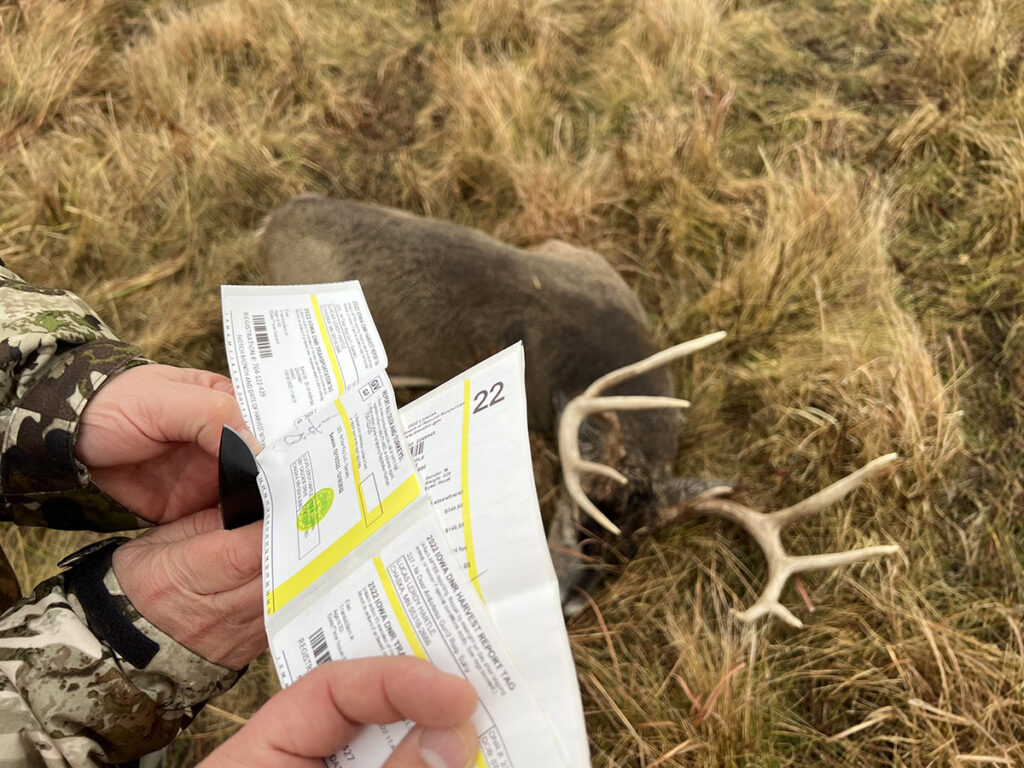
Over the course of the next few years, I would hunt deer three more times with a great friend, Mike Mattly, in Southern Iowa, tagging two more bucks the quality of which had me seriously considering pulling up stakes and moving. Nowhere else have I felt as strongly that a giant could walk out of the woods and into range at any moment.
The Amish Assist
I slowly wiped the persistent fog from the window of the blind and peered out across the switchgrass. Wind-fueled rain continued to beat against the walls as it had for the previous 36 hours, and I was more than thankful to be struggling to keep the windows clear as opposed to sitting against a tree somewhere, soaking up the relentless precipitation. This was not how I had envisioned my 2022 Iowa deer season to be going.
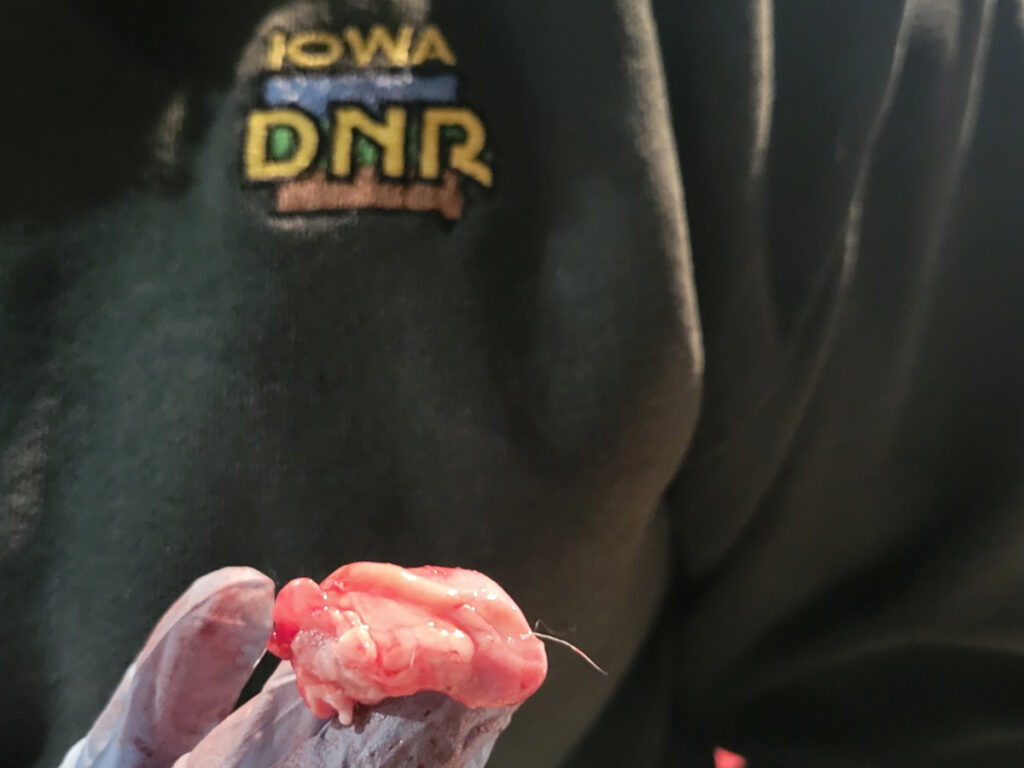
Mike was seated next to me, undoubtedly the source of all the hot air that was causing the windows to fog so aggressively. Watching the cornfield to our left, the wooded draw below, and the switchgrass to the right, I was, quite honestly, struggling to maintain any sort of optimism. In a way, this was a purgatory sit, as we waited for the unseasonal southeast wind to switch and the rain to move out in the days to come.
To make matters ever more dire, the buck we were hunting had been missed in this exact field by Mike’s dad (sorry, Gene) during the early muzzleloader season, and again just two days prior by Mike’s son (sorry, Nick). If this buck wasn’t completely nocturnal by now, he certainly wasn’t stupid.
Across the grass, about a half-mile to the north, the Amish kids were getting out of school, bundled up against the rain and cold. Through the binos, I watched a kid load his little sister into the open wagon, hitch it up to a pony, and then head down the gravel road.
“How old you think that kid is driving that wagon, Mike?” I asked.
It seemed so absurd to me that they were taking themselves home in an open wagon in some pretty gross weather in
December and not loading into a school bus.
Mike worked his binos over the wagon and watched it disappear behind a hill. “Nine, maybe 10.”
I smiled. “Sure glad my old man wasn’t Amish.”
A few deer were beginning to stand, stir, and shake off the rain in the wooded draw below before slowly working up to our left and into the cut cornfield to feed. It wasn’t uncommon to see dozens of deer during any given sit, and it seemed like the parade to food was about to commence.
I was watching a young buck harass a family of does a long, long way to the south when I heard the clop, clop, clop, clop of the pony’s hooves, as the youngsters turned off the gravel road and onto the highway, headed for home. They were still more than a quarter- mile away, but that clopping was loud — even through the wind and the rain — and I pulled up my binos again to see if I could get a better look at these little kids tasked with the unimaginable task of getting themselves home … behind a pony.
As I waited for the wagon to climb back into view from behind a hill, I caught a glimpse of a deer bounding away from the wagon and headed toward our blind. Again, wiping the relentlessly fogging windows, I elbowed Mike and tried to relocate the deer.
“That’s a buck … that’s him!”
In what could only be described as an adrenaline-fueled miracle, Mike and I tangoed into each other’s places in that cozy little blind almost instantly so that I could get the rifle barrel out the right window.
I can’t tell you exactly what happened when that buck stopped, perfectly broadside, almost exactly at 100 yards — but I do know the first shot ripped from my rifle, destroying the serenity of that little valley … and burying into the grass between the legs of that amazing animal. Whirling in retreat, the buck shifted gears as fast as I could work the bolt, and I fired in haste before he disappeared back behind the hill.
Then, it was quiet again.
Although the buck didn’t physically react, I knew that second shot connected — somewhere — because I heard it. I was certain.
With a look that was one part disappointment and one part disbelief, Mike pointed to the door. I’ve never spent any time on a track field, but both of us covered 150 yards in full gear with admirable speed to the next little ridge in the switchgrass. Below it was a small, grassy bowl with a little pond and cattails, about the size of a cul-de-sac you’d find in most any residential neighborhood.
The buck was in there. He had to be. We would’ve seen him come out. Probably.
I took about 10 steps toward the cattails when a rooster and three hens burst from the grass at the tips of my toes. How that flush didn’t completely stop my heart I’ll never know.
Mike continued to circle, getting within 5 yards of the pond’s edge when the buck exploded. I knew I had about 4 seconds before the buck cleared the next ridge and was completely gone, so I took at least three of them to settle as best I could and put that buck in the dirt.
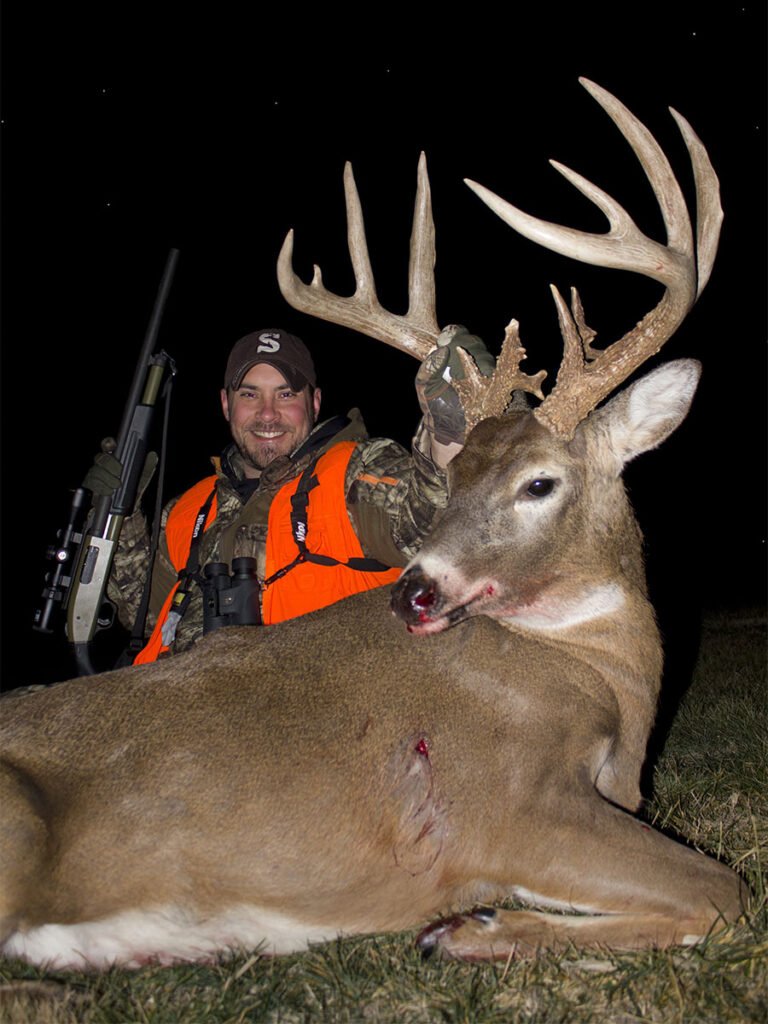
“Where in the hell did that buck come from?”
“He had to be bedded right next to the road,” Mike said. “When those kids turned onto the highway, the buck must’ve gotten spooked and ran right to us. Deer hate the sound of the horses on the road for some reason.”
“Well, then I guess we gotta give the Amish kids the assist on this one.”
“Yup. Welcome to Iowa, Luke,” Mike smiled.

Field Notes:
The first time I walked Iowa with a deer tag in my pocket was 2012, and at that time, residents and non-residents alike had only a couple of options regarding their weapon of choice.
Bowhunters, of course, got approximately three-months’ worth of days to hunt, but on average, it was a four-year wait to pull that tag. If you wanted to hunt with a firearm, the draw generally took only two years, but your options were pinched to a pair of shotgun seasons (five days and seven days, respectively), as well as a late muzzleloader season that ran a couple weeks. And in the hands of most hunters, those slug guns and smokepoles were 100-yard guns at best.
And then came the straight-walled revolution, giving hunters in Iowa and many other Midwestern states the option of shouldering a center-fired cartridge and slightly extending their range with chamberings such as the .450 Bushmaster or .444 Marlin. The movement also gave birth to a couple new options developed specifically for these hunters, with the .350 Legend and, most recently, the .360 Buckhammer.
In 2022, Iowa did something exceptional and completely unexpected. They further expanded the allowable firearms to include shouldered, center-fired ammunition that met a specific set of parameters:
“Rifles firing straight-wall or other centerfire ammunition propelling an expanding-type bullet with a maximum diameter of no less than .350 of an inch and no larger than .500 of an inch and with a public or calculated muzzle energy of 500 foot pounds or higher is legal for hunting deer during the youth and disabled hunting season and first and second shotgun season.”
In addition to the previously mentioned straight-walled cartridges, this opened up options such as the .35 Whelen, .358 Winchester, .375 Winchester, and .45-70 Government — along with some other more obscure chamberings, provided they meet the requirements above. So, in accordance with Iowa’s regulations, you could hunt whitetails in Iowa with a .50 BMG — but please don’t do that, ever.
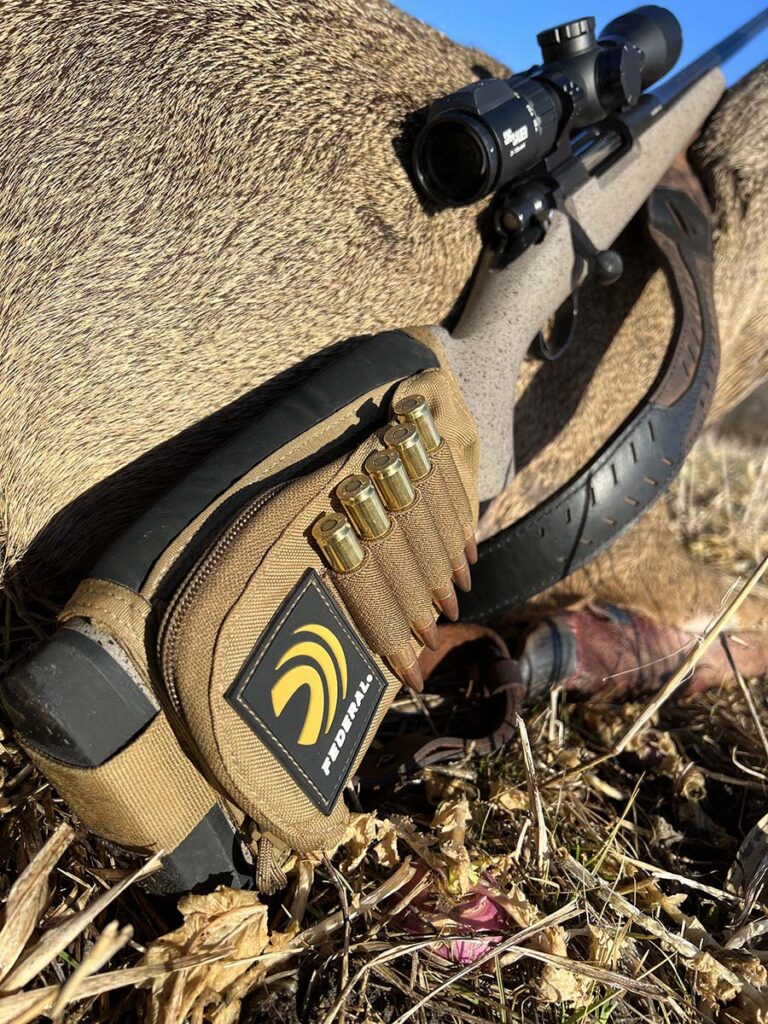
Yes, I know what you’re thinking: The .358 and .375 Winchesters, and especially the .45-70 Government, are, like, way overkill for whitetails. And, I agree with you. Completely. Just think of them as a 300-yard slug gun. Kinda.
The sweet spot here is the .35 Whelen. Developed in 1922 as a wildcat cartridge, Remington eventually standardized the cartridge, but it never really caught on with the mainstream shooting public. And that’s a damned shame, because it’s an old-school gem that will likely grow some within the next five years or so because of laws like those in Iowa.
The Bansner Effect
As soon as I caught wind of Iowa’s nation-leading regulations (more Midwestern states will probably follow suit: Minnesota, you’ve been put on notice), I began a feverish search for a bolt-action .35 Whelen. It became quickly apparent that the options were dismal at best.
CVA makes one in their Scout platform, and those guns are always shooters, but it’s a single-shot break-action. So, it had to be a custom.
There are a lot of gunsmiths who crank out some exceptional hardware, but Google searches and conversations with some of my most trusted gun experts quickly made it quite clear that a Bansner & Company rifle was the only way to go for this build.
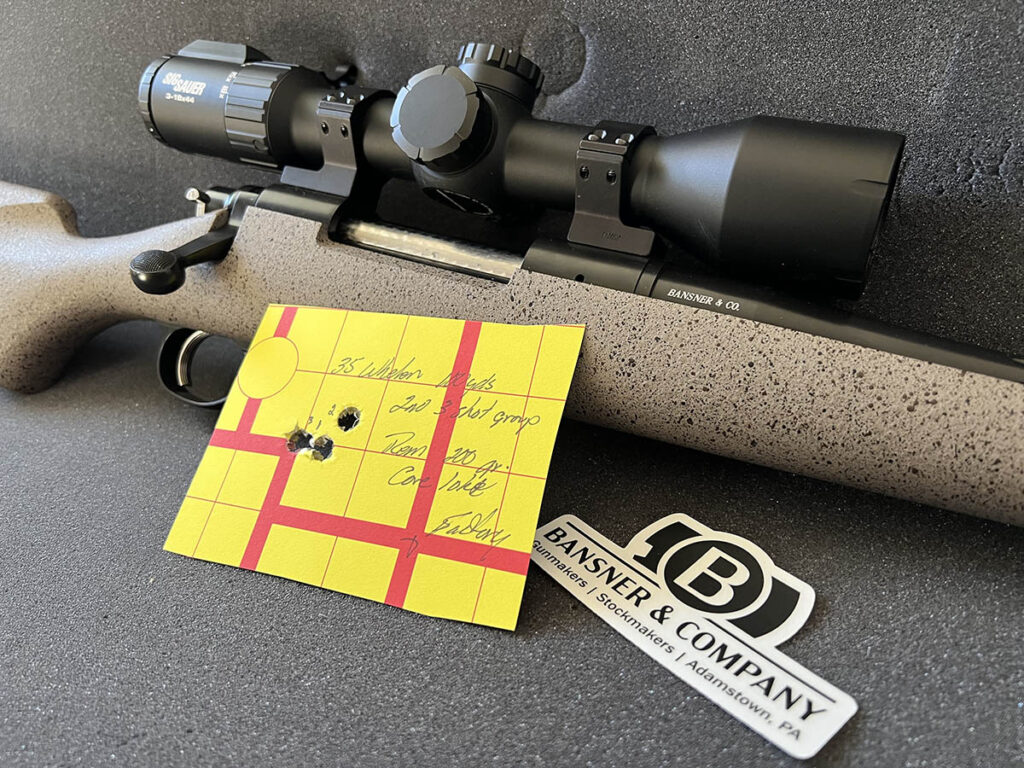
I shipped Mark Bansner the barreled action from a .270 Winchester (a long action with a Remington 700 footprint) that I absolutely hated: It had a sporter barrel that whipped like a flagpole in a hurricane and heated up like a Trump supporter at a Hillary convention. I was happy to see it go.
Mark took that walking stick and milled the action to a .35 Whelen, added a No. 5 fluted Douglas barrel, threaded it for a brake or a suppressor, upgraded the floorplate, dropped in a TriggerTech trigger, Cerakoted the entire barreled action, and affixed Talley rings. All of this was dropped into a Bansner stock. When I got the gun back and put it to work, I was holding a custom .35 Whelen that fired 200-grain Core-Lokts at 2,630 fps in a 100-yard group measuring just over ¾ inch. Yes, read that again if you must.
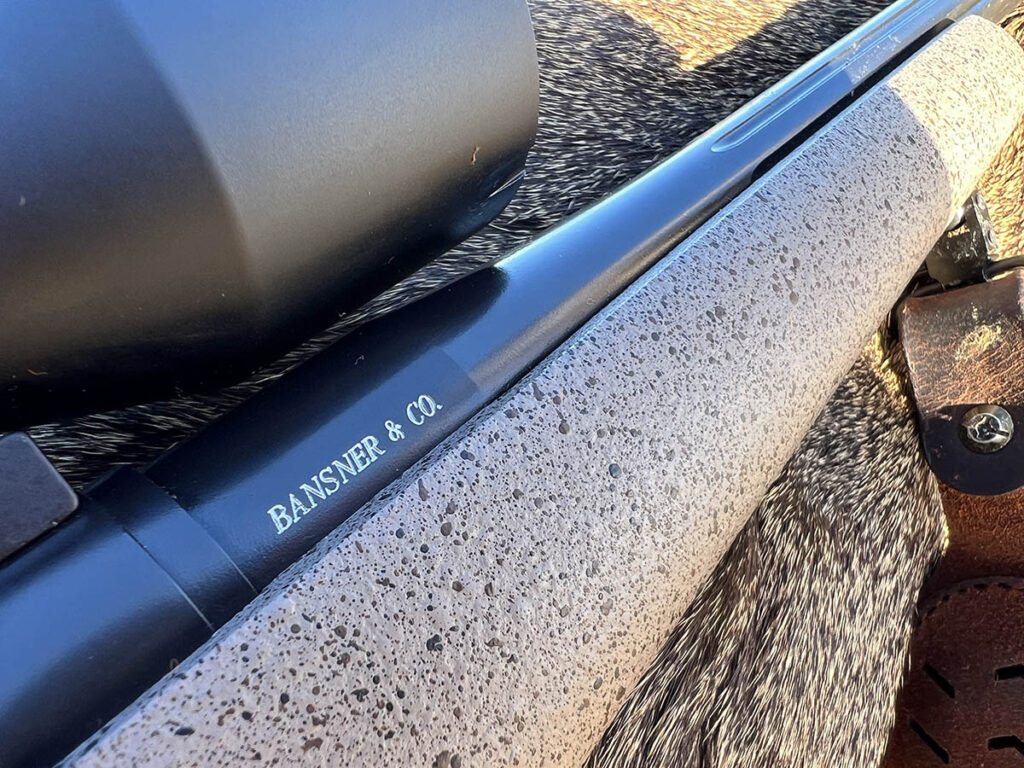
I’m convinced that the linchpin to this entire setup is the Bansner stock, because this .35-caliber rifle recoils like a .270 Winchester shooting very light loads. This gun is so sweet that it actually thanks me for shooting it.
So, over the course of a decade, Iowa’s hunter-friendly, evolving laws have allowed me to trade in the 100-yard, clavicle-crushing slug gun for a legit 400-yard .35 caliber rifle. Again, let’s hope the rest of the straight-walled states are paying attention to what’s going on here.
Editor’s Note: This article originally appeared in Carnivore Magazine Issue 9.
Why You Can Trust CARNIVORE
Since its launch, CarnivoreWeb.com has been a trusted authority on hunting, fishing and wild food, delivering expert insight for outdoorsmen who live the field-to-table lifestyle. More than a hunting and fishing site, CarnivoreWeb.com covers the full spectrum of the modern outdoors—from rifles, bows, and fishing gear to cooking, conservation and adventure.
Our contributors are drawn from across the hunting and angling world, including seasoned guides, lifelong hunters, competitive shooters and outdoor writers with decades of field experience. Every review, article and feature is built on firsthand testing, deep research, and an unwavering commitment to accuracy.
Commitment to Journalistic Principles
At CarnivoreWeb.com, upholding journalistic integrity is our top priority. We follow strict editorial standards to ensure all content is accurate, transparent, and unbiased. Our editors and writers operate independently, free from outside influence, advertisers or stakeholders. We adhere to established journalistic codes of ethics, holding ourselves accountable for the information we publish, correcting errors when they occur and disclosing any potential conflicts of interest.
This commitment ensures that our readers can trust CarnivoreWeb.com to provide reliable, honest coverage that helps them make informed decisions—whether selecting gear, honing outdoor skills or preparing wild game.
Find out more about our Editorial Standards and Evaluation Process


